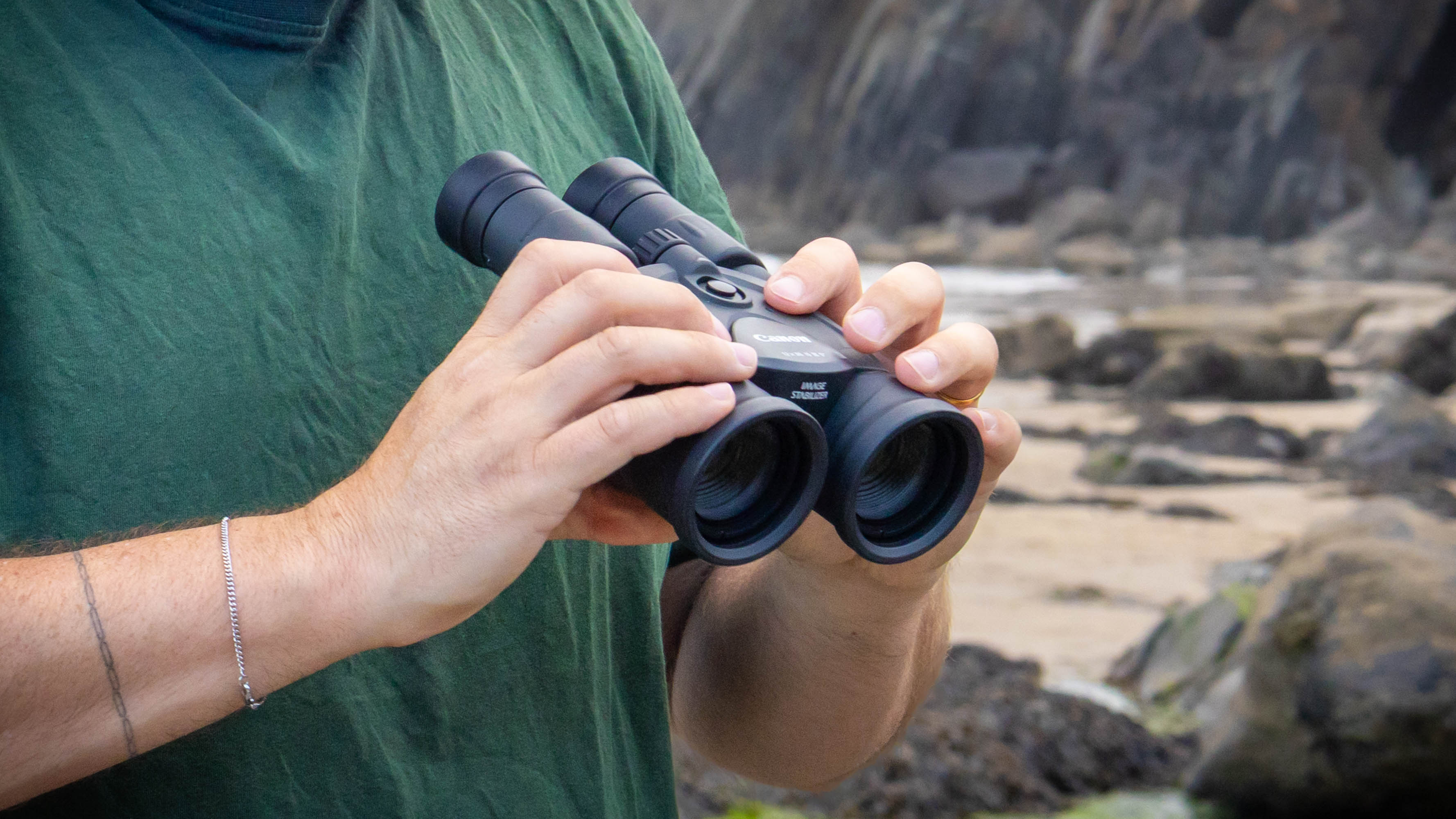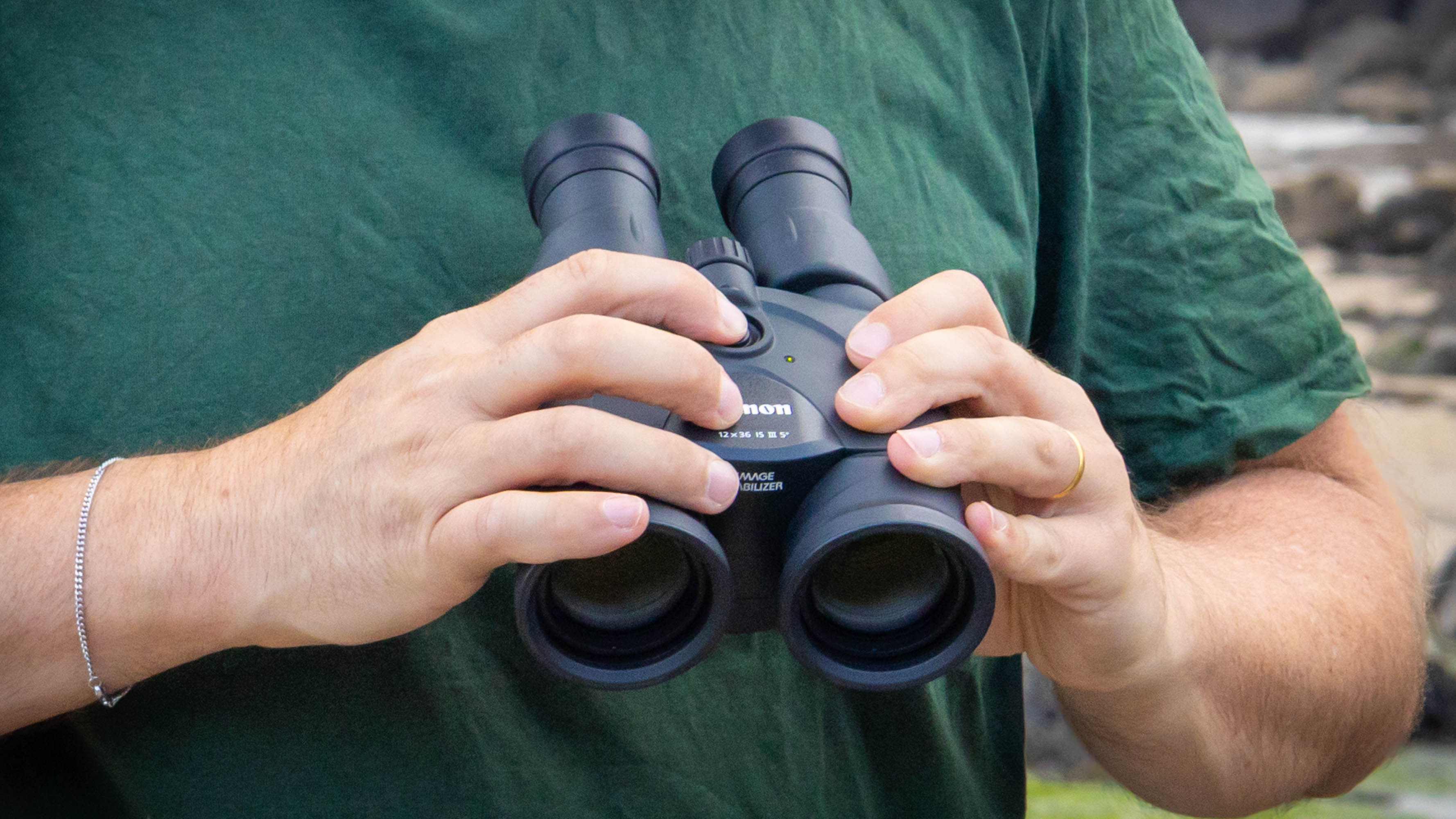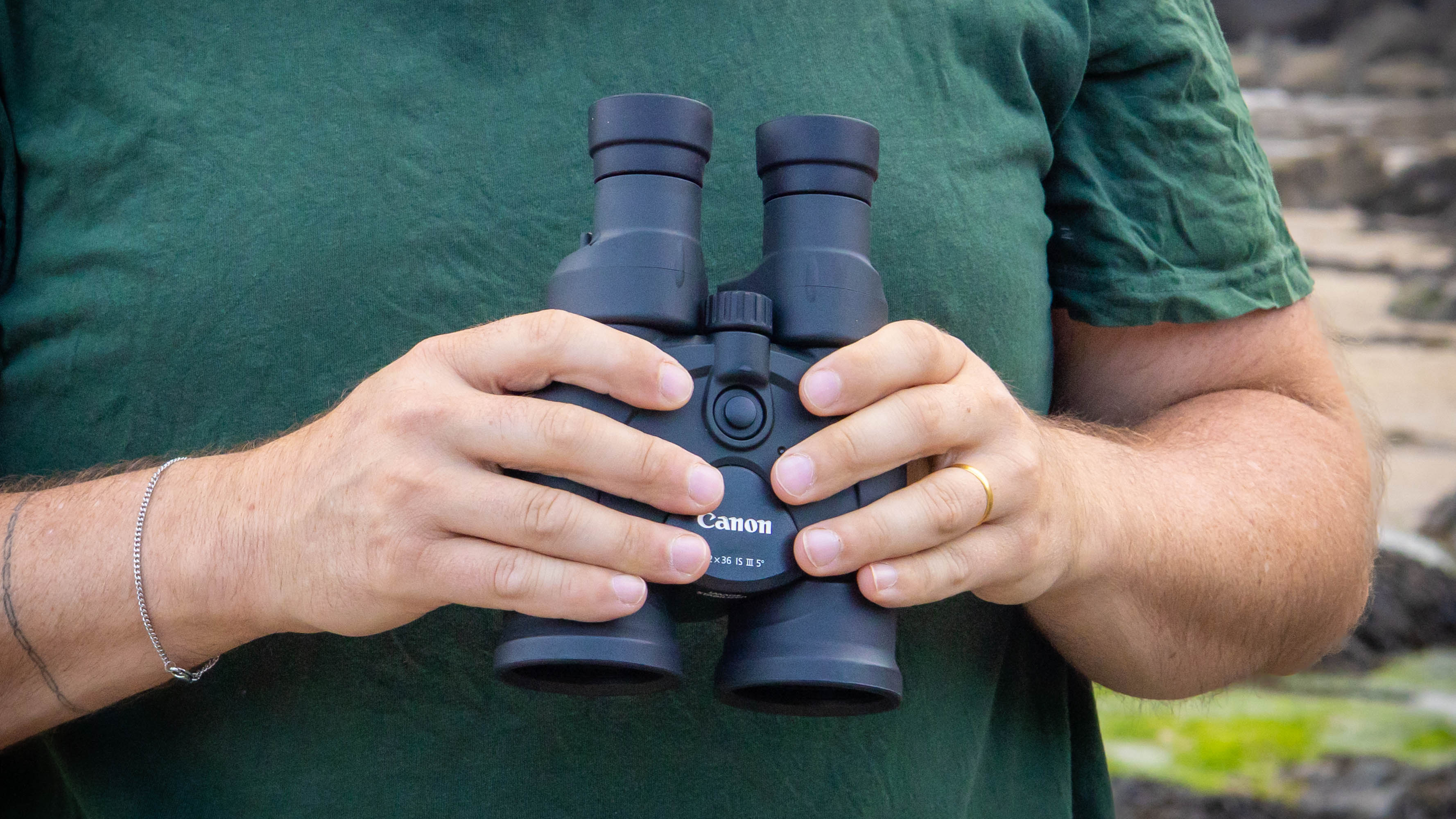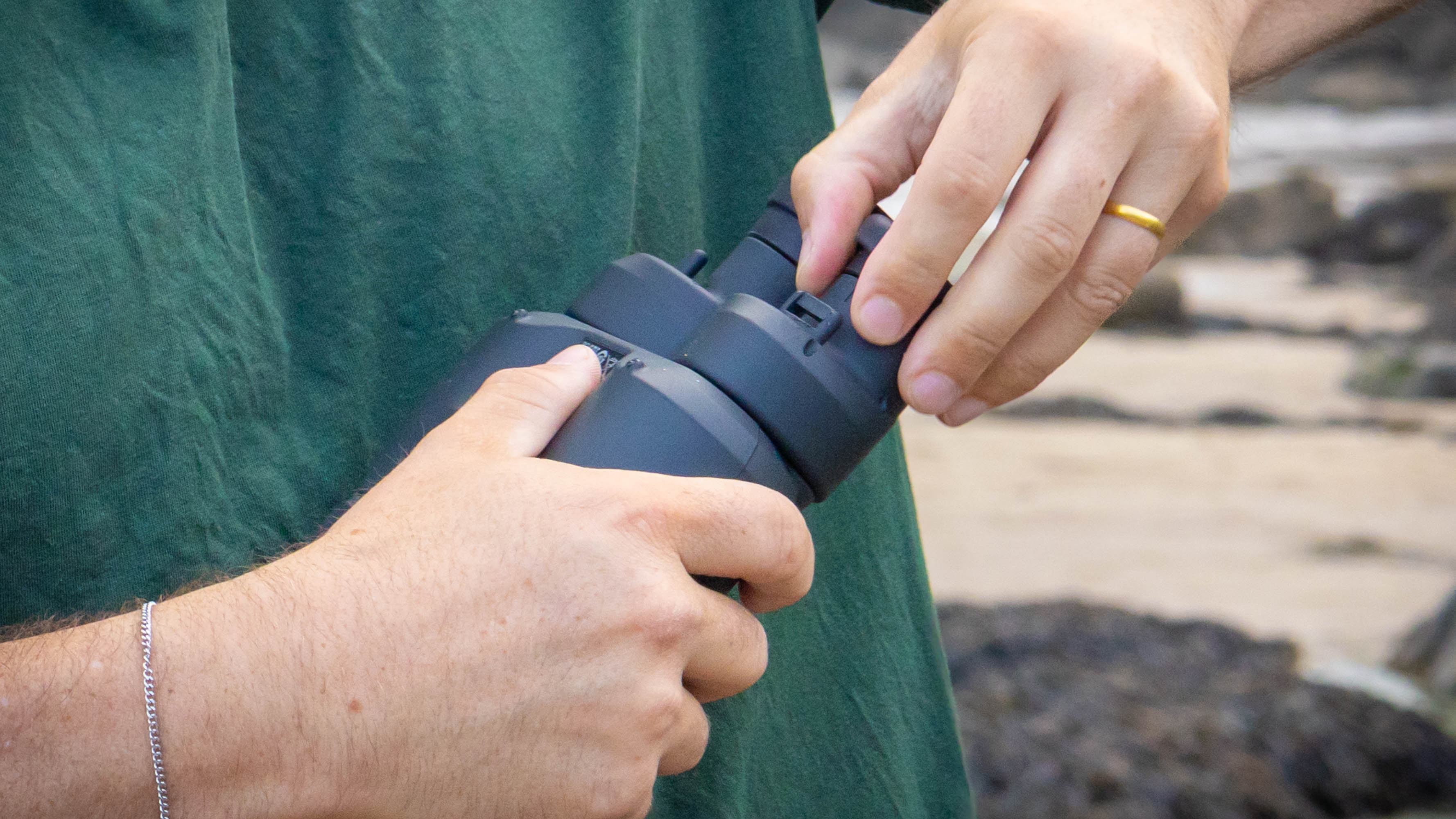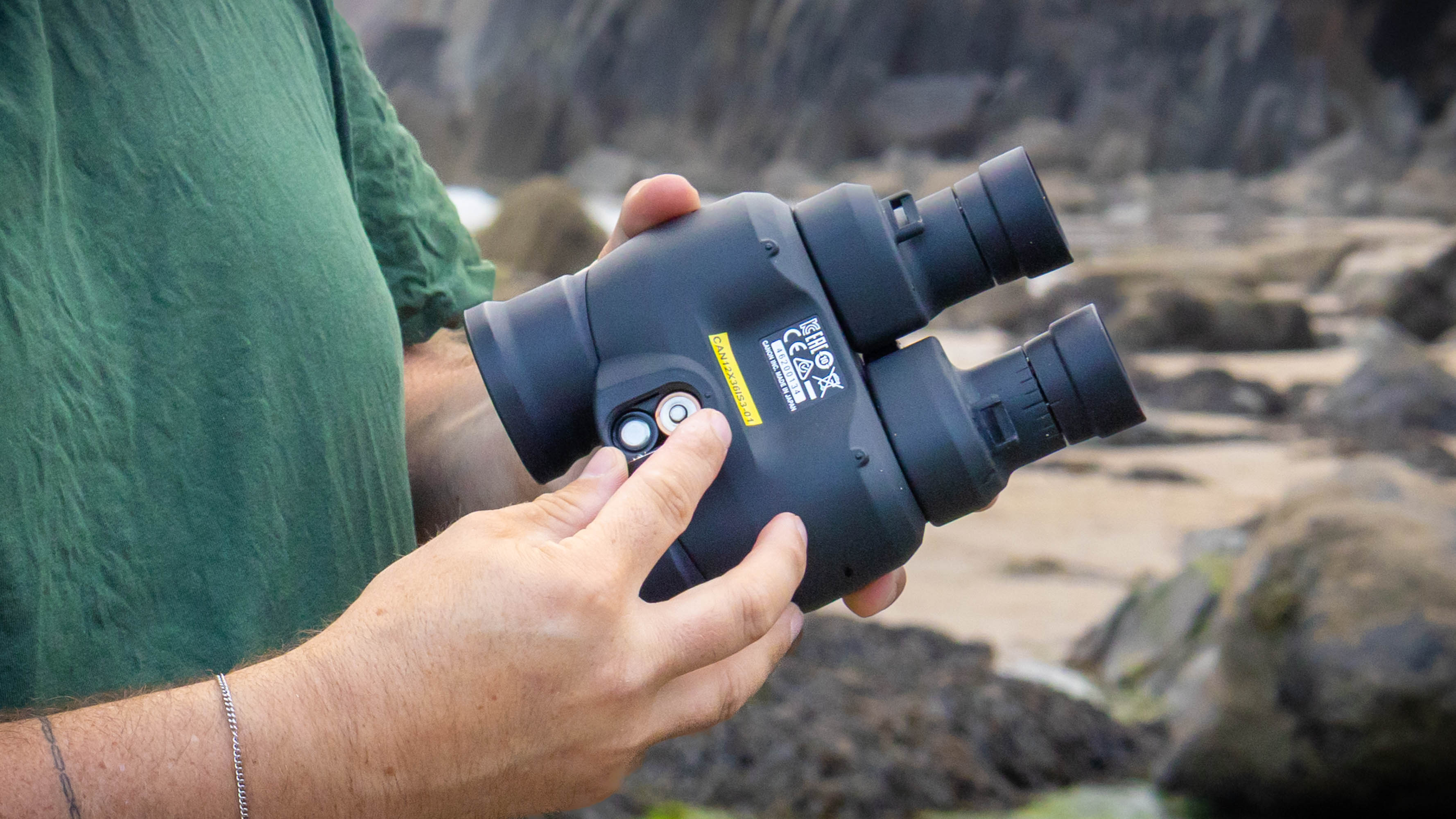Live Science Verdict
We really like the image stabilization in these Canon binoculars. A solid, grippable rubber armor coating makes them durable and protected from knocks and bumps. Bright sharp views are marred only slightly by a lack of premium features we’d like to see in binos that retail at $800.
Pros
- +
Lens coatings dramatically reduce flare
- +
Sharp views across the image circle
- +
Bright views, even at twilight
- +
Image stabilization is strong
Cons
- -
Grippable rubber armor shows marks and dirt easily
- -
Eyecups are flip-up and down
- -
No locking diopter ring
Why you can trust Live Science
Image stabilized binoculars are a must for any nature enthusiast. The ability to scan the skies looking for birds with the images being steady makes the experience so much more enjoyable, and can help you identify birds correctly. It can be difficult enough to follow a bird in flight but when you're struggling with jumpy images, the task can feel impossible. Luckily, the Canon 12x36 IS III binoculars offer great views thanks to their superior optics and high magnification. Not only this, but they have the much-desired image stabilization, making them ideal for birdwatchers.
While we feel these binoculars lend themselves well to nature viewing, they aren't bad for night sky viewing either. With an objective lens diameter of 36mm, this can help make up for the lack of light transmission. Plus, the image stabilization can also help with locating star clusters and identifying constellations.
Design: Porro prism
Magnification: 12x
Objective lens aperture: 36mm
Angular field of view: 5 degrees
Eye relief: 14.5mm (0.57")
Weight: 660 g (23 oz)
Dimensions: 174 mm x 70 mm x 127 mm (6.8" x 2.8" x 5")
While we liked these for stargazing, there are other models better suited in our best binoculars for stargazing guide. There are also some fantastic binoculars in our best binoculars guide for things such as bird-watching, astronomy, wildlife and sports observing.
Canon 12x36 IS III binocular: Design
- Rubber armor coating is protective but marks easily
- Porro prism design isn’t too bulky but offers superior optical quality
- Image stabilization button placement is perfect and intuitive
The Canon 12x36 IS III binoculars have a utilitarian aesthetic. A matte black rubberized coating throughout the whole instrument certainly offers adequate protection and feels really good in my hands. Even in inclement weather when birdwatching, we did not struggle to grip them and felt comfortable handholding without the neck strap whilst trekking over uneven, outdoor terrain. However, we did notice that even after a short time using them, they were marked quite easily and retained dirt and dust which required wiping with a wet cloth. Most of the marks came out easily with some cleaning, but if your fingernails are even slightly long and you are not careful, it’s possible to trace lines in the rubber.
For a porro prism design, known for being optically superior to roof prism but ultimately larger, these binos feel slimline in the hand. At just 1.45 lbs (660 g), they have a legitimate heft that makes them feel premium but don’t weigh me down unwantedly, which we appreciate when hiking through the wild and at larger nature reserves.
As with many other stabilized binoculars in Canon’s line-up, the eyepieces hinge at the sides of the device, rather than relying on a central hinge that rotates. It can take newcomers to this binocular design some getting used to, as we generally flex the body of the binoculars to adjust the interpupillary distance. Over time, though, we think users will prefer this method of adjustment as it helps to keep the binoculars steady when observing.
Canon 12x36 IS III binocular: Performance
- Recessed objective lenses, combined with coatings help reduce flare
- The eyecups are soft and comfortable but only have two positions
- Tracking birds, even flighty, twitchy songbirds is a dream thanks to the stabilization
We love image stabilized binoculars because they hold my views of wildlife and stars steady. While most manufacturers use similar technology to achieve the same result, we am always pleased when we lay my hands on a pair that are fast, smooth and reliable. I’m happy to report that the Canon 12x36 IS III binoculars’ stabilization is exactly that. Whether we w observing the Orion nebula (M42) at night, spotting seabirds from the windswept shorelines or following erratic flights of small songbirds in the garden, hopping from feeder to tree, the steadying prowess of these binoculars didn’t let me down.
Get the world’s most fascinating discoveries delivered straight to your inbox.
Spectacle wearers should be aware that the eyecups are made of a flexible rubber and there are only two usable positions: Flap-up or flap-down. It’s simple enough to flex them around the eyepiece lenses and doesn’t require any particular dexterity (something to be aware of for those with poorer motor skills or numbness in the fingers). However, we do prefer traditional eyecups that rotate to adjust the height. This would make it easier for eyeglasses wearers to get the right distance from the eyepieces without introducing too much vignetting.
Pleasingly, the objective lenses are actually recessed quite deep into the housing. It’s easy to overlook a feature like this but it does impact on performance because the glass is less likely to get scratched when setting them down outside on rocks, grassy or sandy spots (or cafe tables, if your local reserve is lucky enough to have one). It also helps to reduce flare from strong sunlight and this generally aids with improved contrast viewing. It’s especially helpful for stargazing as it can cut the light of nearby streetlights or traffic to a certain degree, depending on the angle of the incident light. Most noticeably, the flaring and ghosting is reduced through the super spectra coating, which interestingly also coats many of Canon’s EF-mount (DSLR) lenses with good effect.
Chromatic aberration (color fringing) is only noticeable at the most contrasted edges of dark birds and trees against bright, overcast skies with some blue or purple appearing occasionally. The field flattener lens in these binoculars combined with the Porro II prism design makes views impressively sharp from edge-to-edge.
Canon 12x36 IS III binocular: Functionality
- Image stabilization button is intuitively placed
- Smooth operation on the focus wheel makes these binoculars a dream to use
- Diopter ring doesn’t lock but is sufficiently stiff to avoid accidental changes
A button on the top of the binoculars engages and disengages the stabilization and differs from many pairs I’ve tried in that the button is located in the center of the instrument, in front of the focusing wheel. As the hands and fingers naturally fall over the center of the binoculars, I can adjust the focus with the index finger and press the button with the middle finger easily.
Some focus wheels are either too stiff for a speedy focus on flighty subjects or too loose, meaning it’s easy to knock during observations. However, the Canon 12x36 IS III does not have this problem. In fact, the focus wheel is as smooth as butter but stiff enough to hold focus when needed. It’s also smaller than other focusing wheels on binoculars of comparable sizes, presumably to accommodate the image stabilization button. This initially feels weird if you’re used to scrolling with two fingers on a non-IS binocular but makes complete sense within seconds once you get used to the centrally-placed IS button.
Like the rest of these binoculars, the battery compartment feels solid and secure. As does the diopter ring, but we would like to see a binocular costing $800 featuring a locking diopter. It’s not a reason we would advise potential buyers to avoid purchasing this bino, but we have seen competitor models that cost around the same amount that have this feature.
Should I buy the Canon 12x36 IS III binoculars?
For any birdwatcher who wants to get closer to distant or smaller subjects, these binoculars are fantastic with that 12x magnification reaching in closer than the more generalist 10x types. Stabilization holds things steady and this is good for tracking wildlife but is also exceptional for stargazing, where the 36mm objective lenses, typically not overwhelming for stargazing, makes up for the lack of light transmission.
If this product isn't for you
These binoculars are not as large as they could be, but will certainly be too big and heavy for some. In that case, we would recommend users that want the stabilization of these Canon’s but want something smaller take a look at the Nikon Stabilized 12x25 S binoculars. They are small, light and virtually identical to their non-stabilized counterparts but views are darker (by around one stop) than these Canon’s and they are softer at the edges.
Instead, you might find that you want extra reach without requiring the extra cost that accompanies binoculars with stabilization. In which case, we'd guide you to the Celestron Nature DX 12x56 binoculars. They have great build quality, have an attractive rubberized armor and twist-up eyecups for spectacle wearers. Their optical performance is not as good as Canon’s but they are around 25% of the cost, at the time of writing.

Jase Parnell-Brookes is the Managing Editor for e-commerce for Live Science and Space. Previously the Channel Editor for Cameras and Skywatching at Space, Jase has been an editor and contributing expert across a wide range of publications since 2010. Based in the UK, they are also an award-winning photographer and educator winning the Gold Prize award in the Nikon Photo Contest 2018/19 and named Digital Photographer of the Year in 2014. After completing their Master's degree in 2011 and qualifying as a teacher in 2012, Jase has spent the last two decades studying and working in photography and publishing in multiple areas, and specializes in low light optics and camera systems.
You must confirm your public display name before commenting
Please logout and then login again, you will then be prompted to enter your display name.

